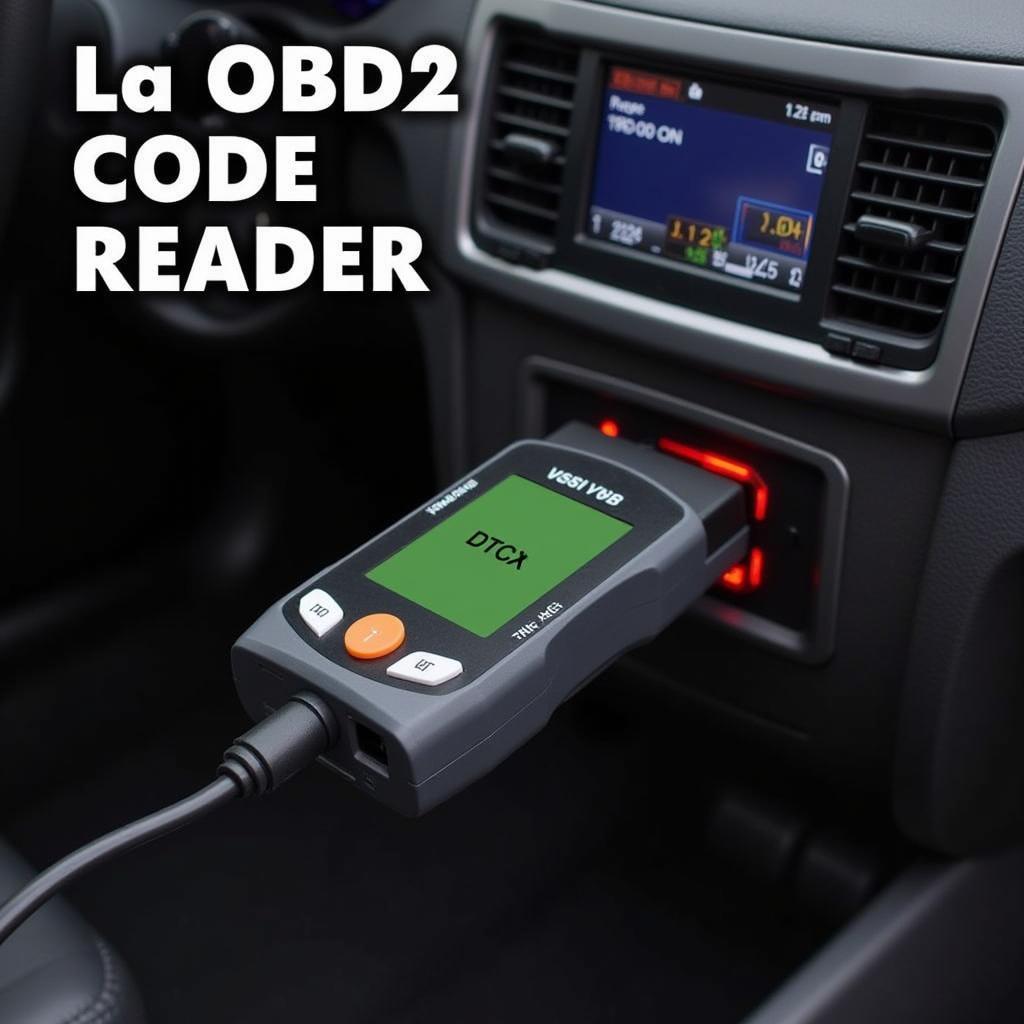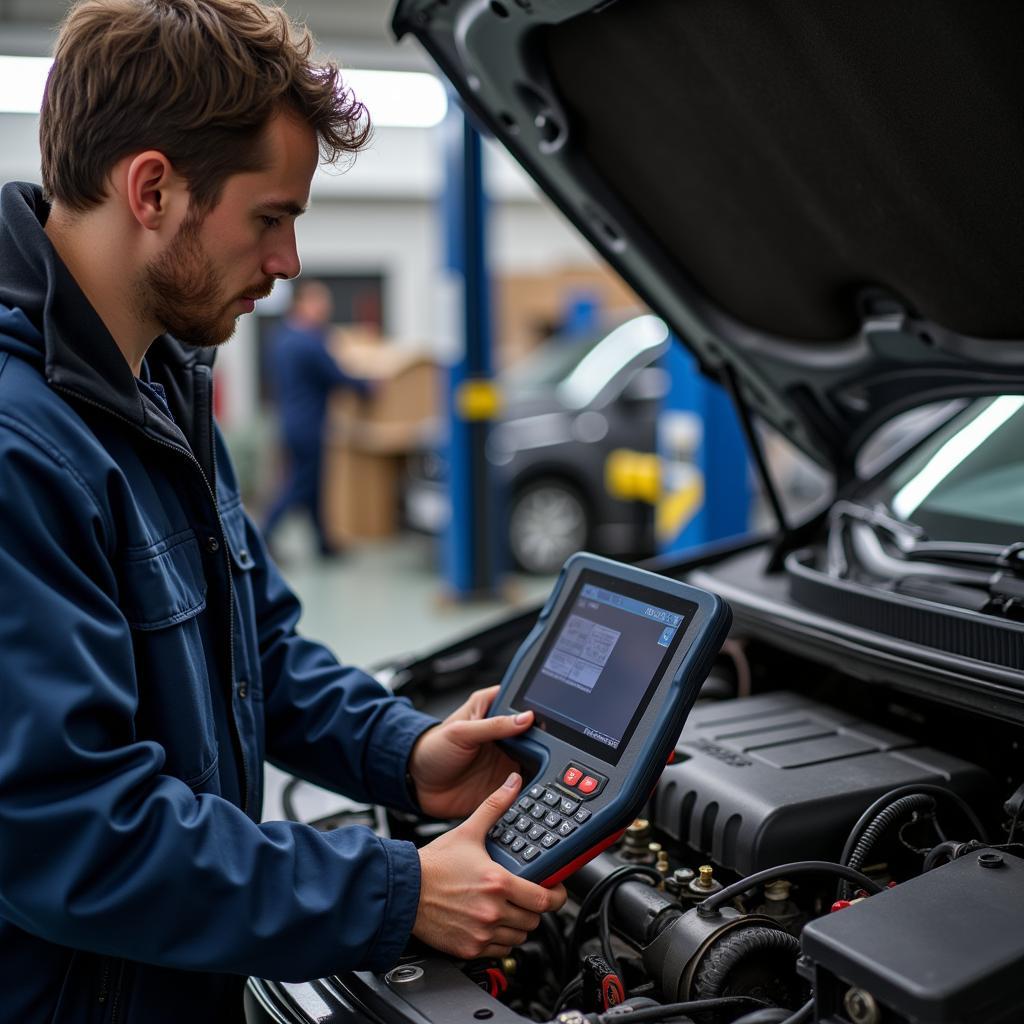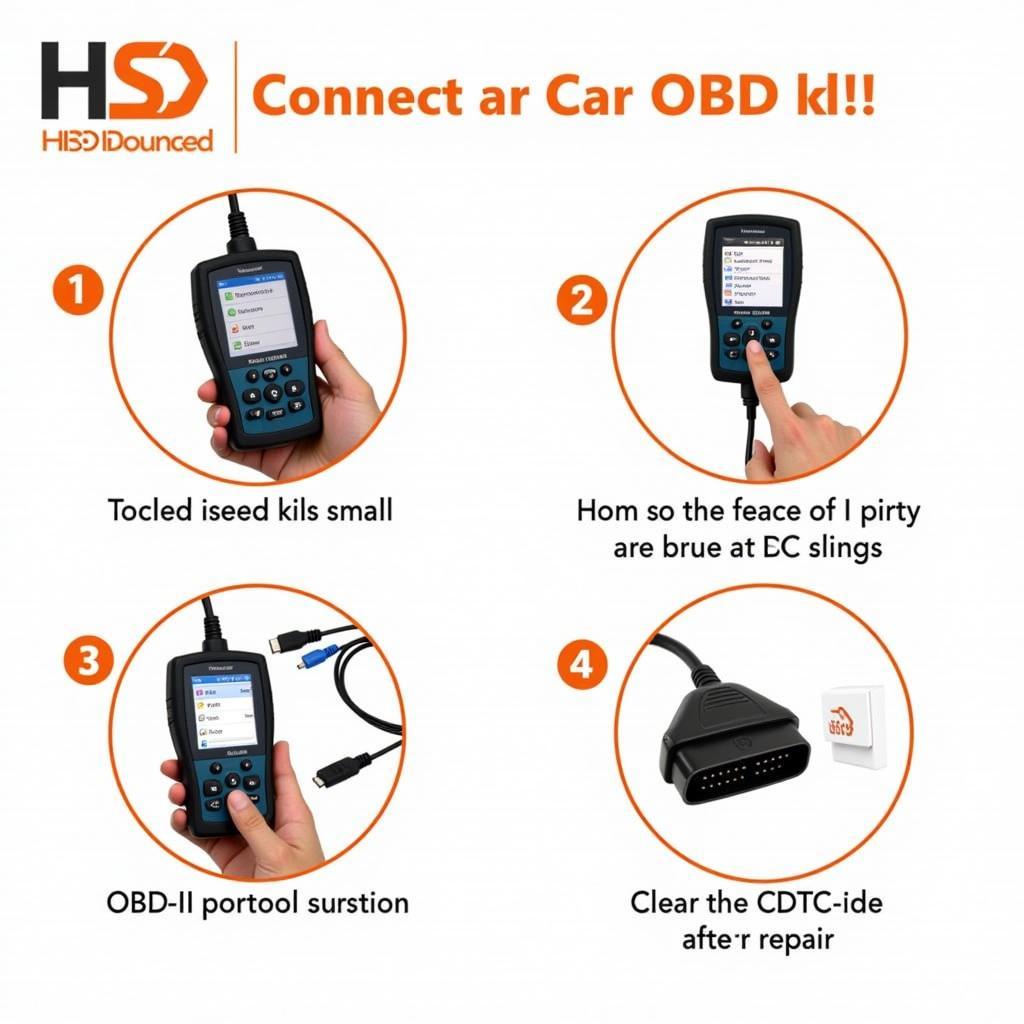Modern vehicles are complex machines, and troubleshooting issues can be a daunting task without the right equipment. Diagnostic tools are essential for identifying problems quickly and efficiently. These tools range from simple code readers to advanced scan tools capable of bi-directional communication with a vehicle’s various control modules. Understanding the different types of diagnostic tools and their uses is crucial for any car owner, repair shop, or automotive technician.
Understanding OBD-II and Diagnostic Trouble Codes (DTCs)
The On-Board Diagnostics II (OBD-II) system is standardized across most vehicles manufactured after 1996. This system monitors various vehicle systems and stores Diagnostic Trouble Codes (DTCs) when a malfunction is detected. These codes are the key to understanding what’s wrong with your car. A basic understanding of OBD-II and DTCs is essential for effectively using diagnostic tools. Imagine having a secret language to communicate with your car – that’s essentially what OBD-II allows you to do.
Basic Code Readers
Basic code readers are entry-level diagnostic tools that can retrieve DTCs from a vehicle’s OBD-II port. They are generally affordable and easy to use. While they provide a starting point for diagnosis, they offer limited functionality. They’ll tell you what the problem is, but not necessarily why or how to fix it. Think of it like having a dictionary – it tells you the meaning of a word but not the full context of its usage.
 Basic OBD2 Code Reader Plugged into a Car's OBD2 Port
Basic OBD2 Code Reader Plugged into a Car's OBD2 Port
Advanced Scan Tools: Unlocking Deeper Insights
Advanced scan tools offer much more than just reading DTCs. They can access live data streams, perform actuator tests, program modules, and even offer bi-directional control, allowing you to command specific components to activate. This level of functionality is crucial for complex diagnostics and repairs. They can give you a real-time view of what’s happening under the hood, much like a doctor monitoring a patient’s vital signs.
Specialized Diagnostic Tools for Specific Systems
Beyond generic OBD-II scan tools, there are specialized tools designed for specific vehicle systems, such as:
- Oscilloscope: Used for analyzing electrical signals and waveforms. Think of it like an EKG for your car’s electrical system.
- Pressure Transducer: Measures pressure in various systems like fuel, oil, and transmission.
- Vacuum Gauge: Diagnoses vacuum leaks and engine performance issues.
- Battery Tester: Assesses the health and charge of a vehicle’s battery.
Choosing the Right Diagnostic Tools for Your Needs
Selecting the right diagnostic tools depends on your needs and technical expertise. A basic code reader might suffice for a car owner looking to understand why their check engine light is on. However, a professional technician would require a more advanced scan tool with extensive capabilities. Just like a carpenter wouldn’t use a hammer for every task, a mechanic needs the right tool for the job.
 Mechanic Using a Diagnostic Tool to Troubleshoot a Car's Engine
Mechanic Using a Diagnostic Tool to Troubleshoot a Car's Engine
“Choosing the correct diagnostic tool can save you countless hours of frustration and unnecessary repairs. It’s an investment that pays for itself in the long run,” says John Davis, Senior Automotive Engineer at ScanToolUS.
Diagnostic Tools and their Uses: A Future Perspective
As vehicles become increasingly sophisticated, so too will the diagnostic tools required to service them. We can expect to see more advanced tools with enhanced capabilities, including cloud-based diagnostics, artificial intelligence integration, and even augmented reality applications.
“The future of automotive diagnostics lies in the seamless integration of software and hardware. We’re moving towards a world where diagnostic tools are not just reactive but predictive,” adds Emily Carter, Lead Software Engineer at ScanToolUS.
Conclusion
Diagnostic tools are indispensable for anyone working with modern vehicles. From basic code readers to advanced scan tools, these tools empower car owners and technicians to diagnose and resolve issues effectively. Understanding diagnostic tools and their uses is no longer a luxury but a necessity in today’s automotive landscape. Diagnostic tools and their uses are constantly evolving, so staying informed is key to staying ahead of the curve.
For further assistance or inquiries regarding diagnostic tools, contact ScanToolUS at +1 (641) 206-8880 or visit our office at 1615 S Laramie Ave, Cicero, IL 60804, USA.
FAQ
- What is a DTC? A DTC, or Diagnostic Trouble Code, is a code stored by the OBD-II system indicating a specific malfunction in a vehicle.
- Do I need a diagnostic tool if my check engine light isn’t on? While a check engine light is a clear indicator of a problem, having a diagnostic tool can help you identify potential issues even before the light comes on.
- Can I use a generic scan tool on any car? Most generic scan tools work with vehicles manufactured after 1996 that comply with OBD-II standards.
- Are expensive scan tools always better? The best scan tool depends on your specific needs and level of expertise. A more expensive tool might not be necessary for basic diagnostics.
- What is bi-directional control? Bi-directional control allows a scan tool to send commands to specific actuators, allowing you to test components and pinpoint malfunctions.
- How often should I use a diagnostic tool? For preventative maintenance, using a diagnostic tool every few months can help identify potential problems early.
- Where can I learn more about using diagnostic tools? Many online resources and training programs offer in-depth information about automotive diagnostic tools and their applications.

